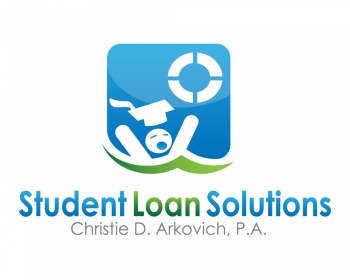 If someone were to ask me what could be done legislatively to help student loan borrowers manage or reduce their student loan debt, I’d suggest and have suggested:
If someone were to ask me what could be done legislatively to help student loan borrowers manage or reduce their student loan debt, I’d suggest and have suggested:
- 1) simplification of the IDR programs- President Trump has included this in the two most recent budget proposals – one plan that fits all paying 12.5% of discretionary income for 15 yrs – but it should based upon the borrower’s income, not including their spouse;
- 2) decrease interest rate for existing borrowers – many new federal loans are 3-4%, but many older ones are 6.8% which is high in today’s market, those with higher degrees range from 8-8.5%; and private loans are all over the place – 10-16% is not unheard of;
- 3) allow public service forgiveness on both Direct and the older FFEL federal loans on a sliding scale, 10% per year and applied annually, instead of 100% after 10 yrs.; and
- 4) more oversight of federal and private student loan servicers – why should student loan borrowers have far less protections than any other borrowers of consumer debt. Most of these borrowers were young and stupid (read inexperienced) when taking out these loans, and represent some of our most vulnerable Americans.
- Note, none of these suggestions suggest forgiving all student loans en masse. We support strategic efforts to address the most problematic areas which would be more efficient, cost effective, and help those most in need, or those most deserving (public service, high interest traps, debtors in bankruptcy, worthless degrees, to name a few).
Regarding the Public Service Forgiveness above, the program now only applies to Direct loans which is one of the largest areas of confusion — and the source of many subsequent denials. Only 1/2 of one percent of those who have applied for PSLF forgiveness have been approved. Why shouldn’t the PSLF apply to the older FFEL (Federal Family Educational Loans) loans? They are also federal loans, same as Direct loans. The Borrower Defense to Repayment Program permits forgiveness for both FFEL and Direct loans — there is just an extra step to consolidate to Direct once the BDTR approval is completed for the forgiveness to apply — retroactively. No biggie. We’ve done that prior to the hold on the BDTR program for a client and it was approved. Zero debt. Happy client.
And why not 10% forgiveness annually? I could easily see people wanting to work public service for the experience for 2-5 years – they would be paid less than the private field, but would receive 10% forgiveness of the principal balance of their student loans every year they spend in public service. Ten years is asking a lot. It often means putting off having a family, buying a home, possibly even limiting opportunities in the private market if they spend too much time in a government job. Finally, they can touch and feel the 10% now, instead of hoping and praying for 100% in ten years!
By the way, the 10% per year of public service idea comes from my nephew, Andrew Goring, – who fortunately does not have a lot of student loan debt as he embarks on his new career as a lawyer, but I’m sure many of his classmates would welcome such an idea.
In case you’d like some ideas on how to avoid incurring too much student loan debt in the first place, please check out our other blogs, a couple are included below. If you, or someone who is close to you, needs student loan debt relief, please reach out to us!
 Reboot Your Life: Tampa Student Loan and Bankruptcy Attorney Blog
Reboot Your Life: Tampa Student Loan and Bankruptcy Attorney Blog

